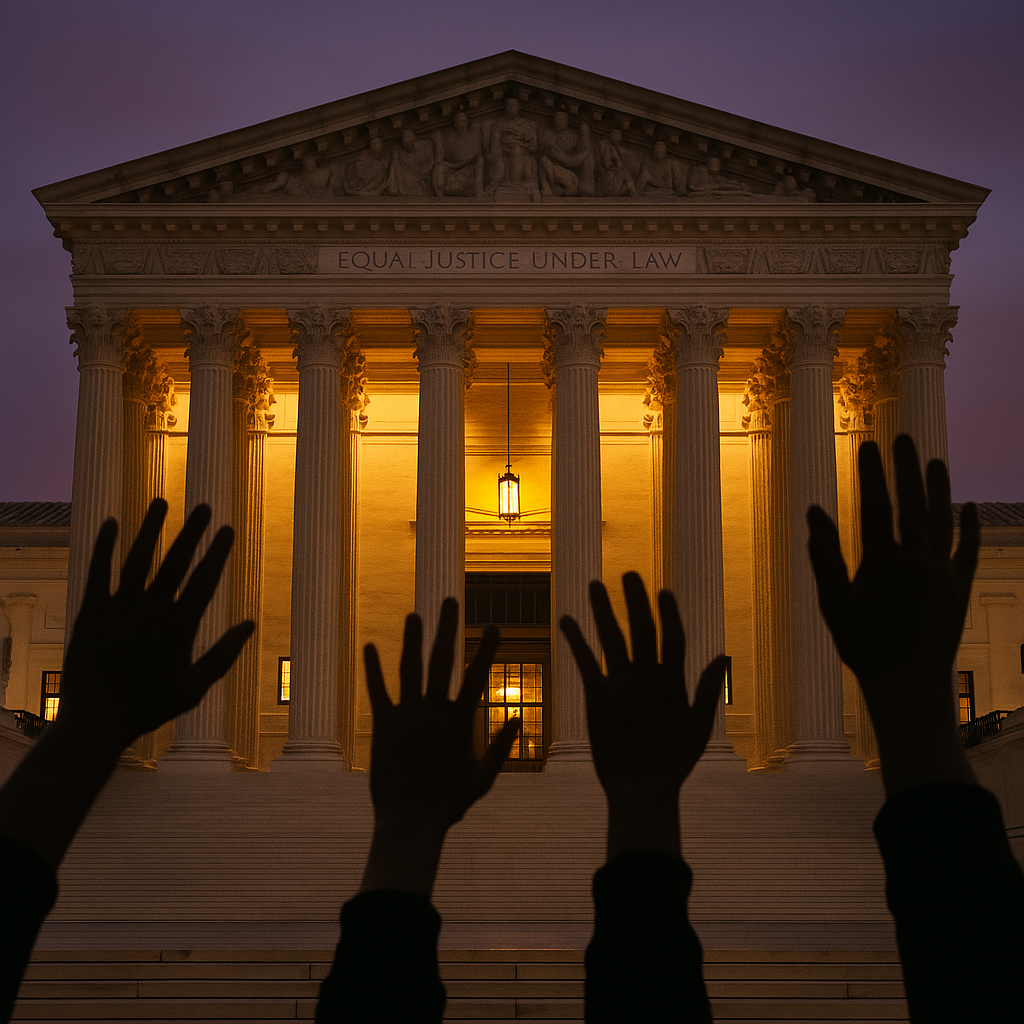In times of democratic uncertainty, I find myself returning to one anchor: the judiciary. It’s not because the courts are flawless—they are human institutions, shaped by history and struggle—but because they stand as our last, best defense against the erosion of constitutional norms and the rule of law. While all three branches of government are co-equal in theory, the judiciary alone exists to protect our rights from overreach by the executive and legislative branches. And that makes its independence not just a legal concept, but a cornerstone of our freedom.
Why Judicial Independence Is More Than a Theory
Landmark Rulings That Protected Our Democracy
Marbury v. Madison (1803)
📜What happened: The Supreme Court asserted its power of judicial review, declaring part of a congressional act unconstitutional.
📜Why it matters: This case gave the judiciary the authority to strike down laws that violate the Constitution—laying the foundation for modern checks and balances.
United States v. Nixon (1974)
📜What happened: The Court ruled that President Nixon must release the Watergate tapes.
📜Why it matters: It reinforced that the President is not above the law and upheld the principle of transparency and accountability in the executive branch.
Boumediene v. Bush (2008)
📜What happened: The Court ruled that Guantanamo detainees have the right to challenge their detention in U.S. courts.
📜Why it matters: It showed that constitutional protections extend even in times of fear and crisis—protecting liberty when it’s most at risk.
Assaults on the Bench: Then and Now
Past Political Interference and Judicial Pressure
Judicial independence has never existed in a vacuum. Political actors have tried, sometimes successfully, to manipulate or undermine the courts. But history shows that these attempts were met with institutional pushback or public scrutiny that eventually reaffirmed the judiciary’s autonomy.
- 1869 – Ex parte McCardle: Congress revoked Supreme Court jurisdiction mid-case to prevent it from ruling on Reconstruction policies.
- 1937 – FDR’s court-packing plan: A bold attempt to expand the number of justices to push through New Deal legislation. The backlash helped reinforce the idea that courts must remain ideologically neutral.
- 2000 – Bush v. Gore: Widely criticized for perceived partisanship, the ruling strained public trust, though the courts remained institutionally intact.
Present-Day Attacks on Judicial Authority and Safety
The rhetoric and tactics today feel different, not only in volume but in strategy. Judges are not just being challenged in court or in Congress; they’re being personally targeted, threatened, and in some cases, physically endangered. The line between political disagreement and authoritarian delegitimization is growing dangerously thin.
- Trump’s legal counteroffensive
Filing lawsuits against judges or entire courts, calling them “enemies of democracy,” and implying they are part of a “deep state.” - Threats to judges’ safety
Judges across the country have been doxxed, threatened, and “swatted.” A California judge received death threats after ruling against a right-wing group. In one of the most tragic examples of how real these threats have become, U.S. District Judge Esther Salas lost her only child, Daniel Anderl, in 2020 when a disgruntled attorney posed as a delivery driver and opened fire at their New Jersey home. The attack was meant for Judge Salas. In a chilling twist, pizzas have recently been sent to judges’ homes across the country using Daniel’s name as the sender, a grotesque attempt to weaponize his memory. Federal marshals are now stationed at some judges’ homes. - Right-wing media amplification
Outlets and influencers call judges “rogue,” “treasonous,” or “corrupt,” fostering mistrust in the entire judicial system. Right-wing media doesn’t just echo Trump’s attacks on the judiciary, it intensifies them. What starts as inflammatory rhetoric on social media or at rallies quickly spreads across sympathetic platforms like Fox News, OANN, Real America’s Voice and Truth Social, framing judges as “deep state operatives” or “enemies of the people.” This feedback loop turns legal accountability into partisan persecution and primes viewers to view judicial rulings as political vendettas rather than constitutional guardrails.
How Communities Can Stand with the Judiciary
Defending the judiciary doesn’t require a law degree. It requires courage, community and the willingness to speak up. As attacks grow louder, our response must grow stronger and more visible. Across the country, people are finding creative, grassroots ways to defend the independence of our courts. These actions not only counter harmful narratives, they affirm our shared commitment to justice.
Concrete Actions to Support Judicial Independence
- Show up publicly
Attend or organize rallies at local courthouses. Legal professionals and community members have hosted “Stand With the Courts” events to affirm the judiciary’s constitutional role. - Write strategically
Submit letters to the editor, opinion pieces, or blog posts defending judges under attack. These can shift the public conversation, especially at the local level. - Use social media
Share quotes from judicial rulings, promote judicial education resources, and amplify voices defending judicial independence. Hashtags like #StandWithJudges or #RuleOfLawNow can help build momentum. - Support judicial security
Create neighborhood watch circles to support judges living in your area. Learn about the Daniel Anderl Judicial Security and Privacy Act, and advocate for greater protection measures in your state. - Push for civic education
Host discussions or teach-ins in your community about how the courts function and why judicial independence matters, especially with younger audiences or new voters.
Speak Up. Show Up. Stand With the Courts.
The courts can’t defend themselves with press releases or pundits. They rely on the public to uphold their legitimacy and safety. If we want to protect this vital pillar of democracy, we must be louder than the attacks. Choose one way this week to show support for judicial independence. Write. Rally. Watch. Speak. Your voice matters more than you know.
